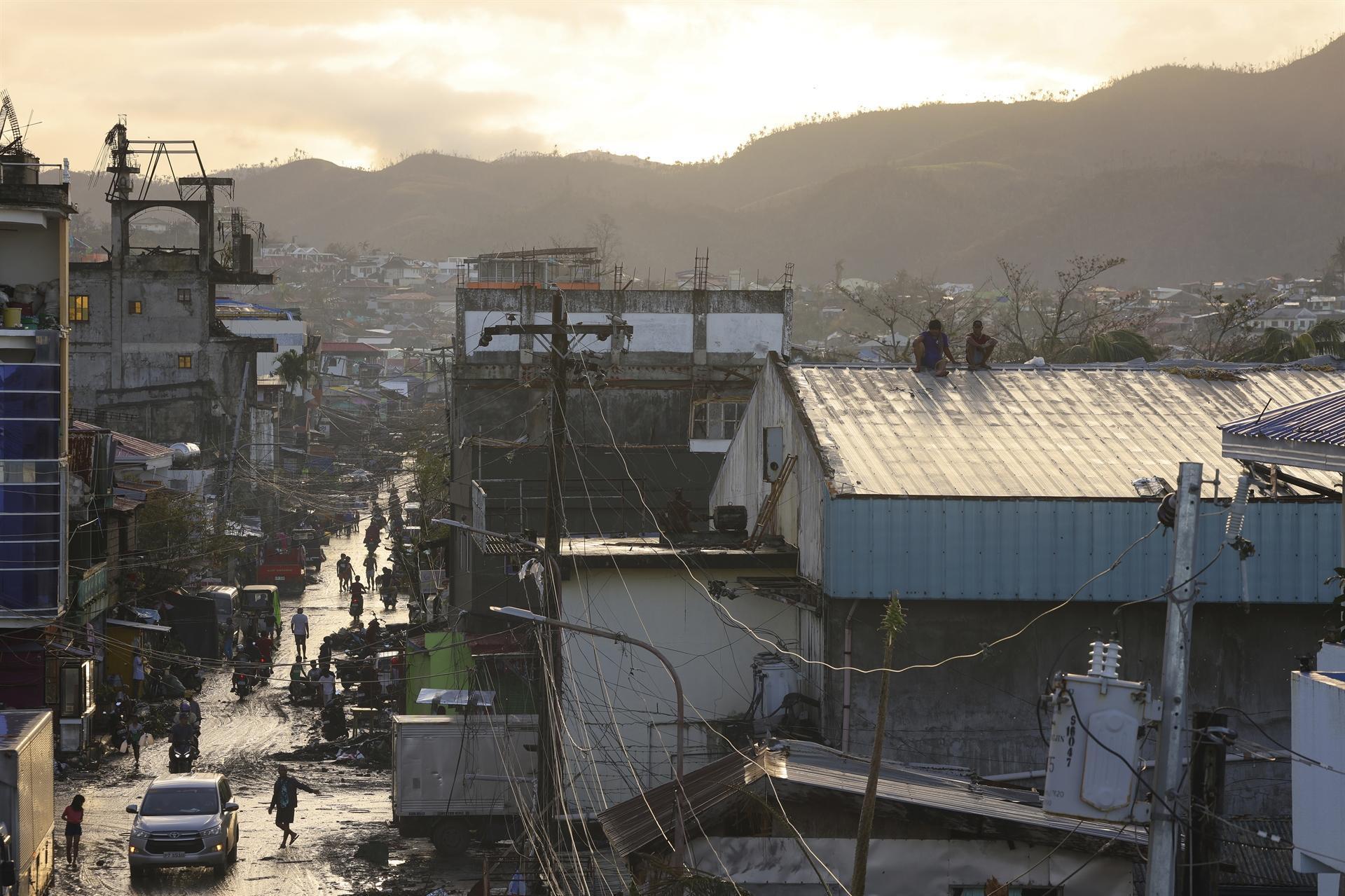
Troops raced on Dec. 21 to deliver food and water to typhoon-ravaged islands of the Philippines as charities appealed for aid to help hundreds of thousands left homeless by the deadly storm.
At least 375 people were killed and hundreds injured when Typhoon Rai pummelled the southern and central regions of the archipelago on Thursday, wiping out wooden houses, uprooting trees and knocking out power across entire islands.
"Never in my entire life have I encountered such a typhoon," said Catholic Bishop Antonieto Cabajog in Surigao, on the northern tip of Mindanao island.
"To say ’super’ is an understatement," he told a Catholic church-run news agency.
More than 400,000 people were sheltering in evacuation centers or with relatives, the national disaster agency said, after their homes were damaged or destroyed by the strongest typhoon to hit the country this year.
One of the hardest-hit islands was Bohol - known for its beaches - where at least 94 people have died, provincial Governor Arthur Yap said on Facebook.
A state of calamity has been declared on the island.
Yap said the province had run out of money and pleaded for President Rodrigo Duterte’s government to send funds to buy food and water for desperate families.
"If you won’t send money to buy food, send soldiers and police because there will be looting here," Yap warned during an interview with radio station DZBB.
While other parts of the Philippines celebrated Christmas, Bohol was "undergoing a Yolanda-like situation", he added, using the local name for Typhoon Haiyan in 2013.
There has also been widespread destruction on Siargao, Dinagat and Mindanao islands, which bore the brunt of the storm, which packed winds of 195 kilometers (120 miles) per hour.
Thousands of military, police and coast guard personnel have been deployed to deliver food, drinking water and medical supplies to survivors, who have been struggling to find basic necessities.
"I have directed the (military) to deploy all available assets - ships, boats, aircraft, trucks - to bring relief goods to the stricken areas," Defence Secretary Delfin Lorenzana said Monday.
Heavy machinery, including backhoes and front-end loaders, also have been sent to clear roads.
The Red Cross is also flying relief to Siargao and Bohol islands - popular tourist destinations that had been struggling to recover after COVID-19 restrictions wiped out visitor numbers.
"The emergency appeal by IFRC helps us to act swiftly and do all we can to help people and families get back on their feet," said Alberto Bocanegra, head of the International Federation of Red Cross and Red Crescent Societies in the Philippines.
The organization has appealed for $22 million to fund urgent relief and recovery efforts.
The U.K. has pledged around $1 million to the IFRC effort, while Canadian Prime Minister Justin Trudeau promised financial assistance.
Other non-government organizations are also appealing for donations.
Farmers and fisherfolk on Palawan, the last island to be hit by Rai before it moved over the South China Sea, had seen their livelihoods destroyed, said Catholic priest Eugene Elivera in the provincial capital Puerto Princesa.
Many on the island had "never" experienced such a strong storm, he said, adding: "The challenge now is how to begin again."
Rai hit the Philippines late in the typhoon season: most cyclones develop between July and October.
Scientists have long warned that typhoons are becoming more powerful and strengthening more rapidly as the world becomes warmer because of human-driven climate change.
The Philippines - ranked among the most vulnerable nations to the impacts of climate change - is hit by an average of 20 storms every year, which typically wipe out harvests, homes and infrastructure in already impoverished areas.
Typhoon Haiyan was the strongest storm ever to have made landfall, leaving more than 7,300 people dead or missing.
The death toll from Rai is not expected to get anywhere close to that number.